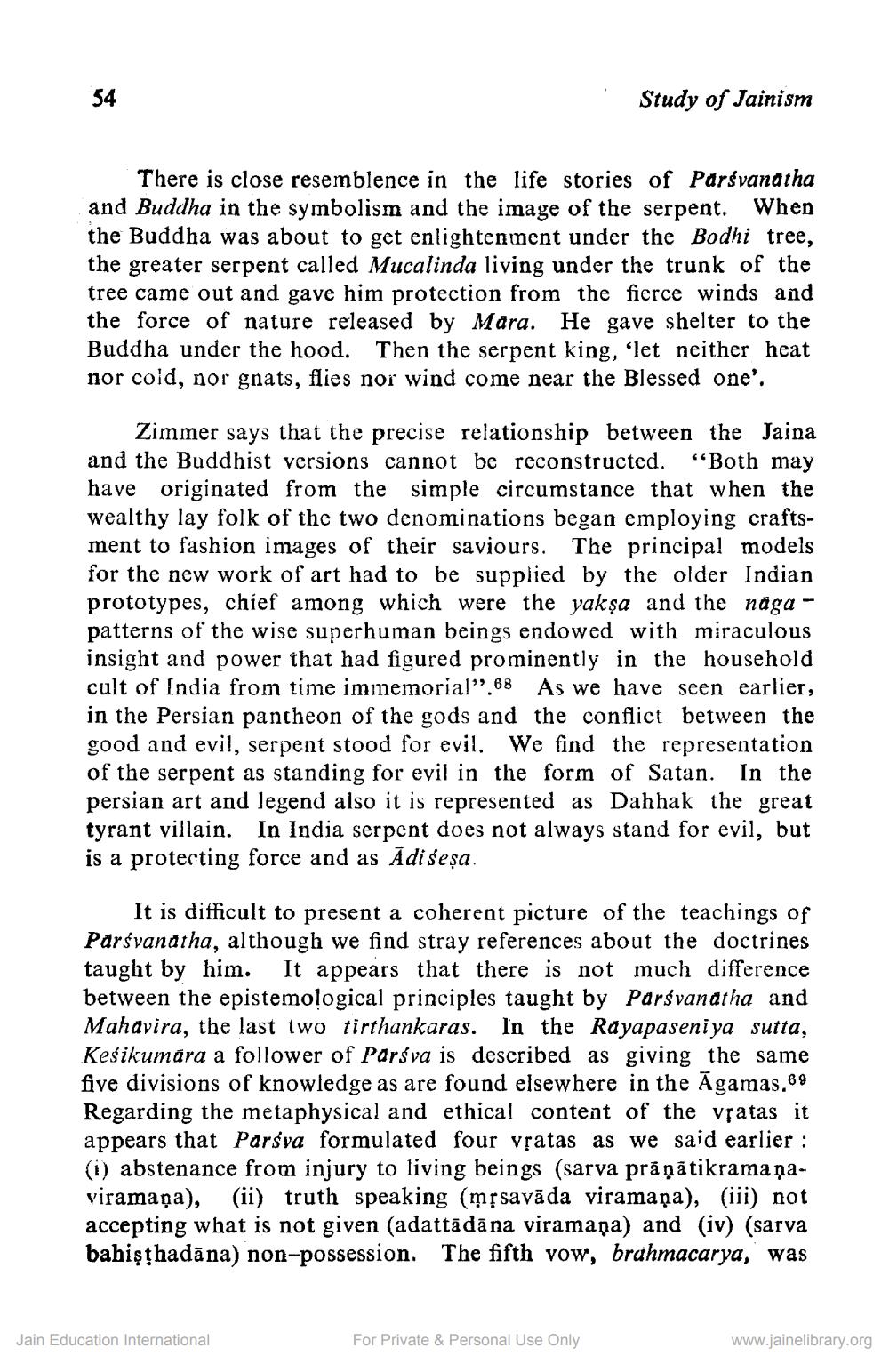________________
54
There is close resemblence in the life stories of Parsvanatha and Buddha in the symbolism and the image of the serpent. When the Buddha was about to get enlightenment under the Bodhi tree, the greater serpent called Mucalinda living under the trunk of the tree came out and gave him protection from the fierce winds and the force of nature released by Mara. He gave shelter to the Buddha under the hood. Then the serpent king, 'let neither heat nor cold, nor gnats, flies nor wind come near the Blessed one'.
Study of Jainism
Zimmer says that the precise relationship between the Jaina and the Buddhist versions cannot be reconstructed. "Both may have originated from the simple circumstance that when the wealthy lay folk of the two denominations began employing craftsment to fashion images of their saviours. The principal models for the new work of art had to be supplied by the older Indian prototypes, chief among which were the yakṣa and the nagapatterns of the wise superhuman beings endowed with miraculous insight and power that had figured prominently in the household cult of India from time immemorial" 68 As we have seen earlier, in the Persian pantheon of the gods and the conflict between the good and evil, serpent stood for evil. We find the representation of the serpent as standing for evil in the form of Satan. In the persian art and legend also it is represented as Dahhak the great tyrant villain. In India serpent does not always stand for evil, but is a protecting force and as Adiseṣa.
It is difficult to present a coherent picture of the teachings of Parsvanatha, although we find stray references about the doctrines taught by him. It appears that there is not much difference between the epistemological principles taught by Parsvanatha and Mahavira, the last two tirthankaras. In the Rayapaseniya sutta, Kesikumara a follower of Parsva is described as giving the same five divisions of knowledge as are found elsewhere in the Agamas.69 Regarding the metaphysical and ethical content of the vratas it appears that Parsva formulated four vratas as we said earlier : (i) abstenance from injury to living beings (sarva prāṇātikramaņaviramaņa), (ii) truth speaking (mṛsavāda viramaņa), (iii) not accepting what is not given (adattādā na viramaņa) and (iv) (sarva bahiṣṭhadāna) non-possession. The fifth vow, brahmacarya, was
Jain Education International
For Private & Personal Use Only
www.jainelibrary.org




